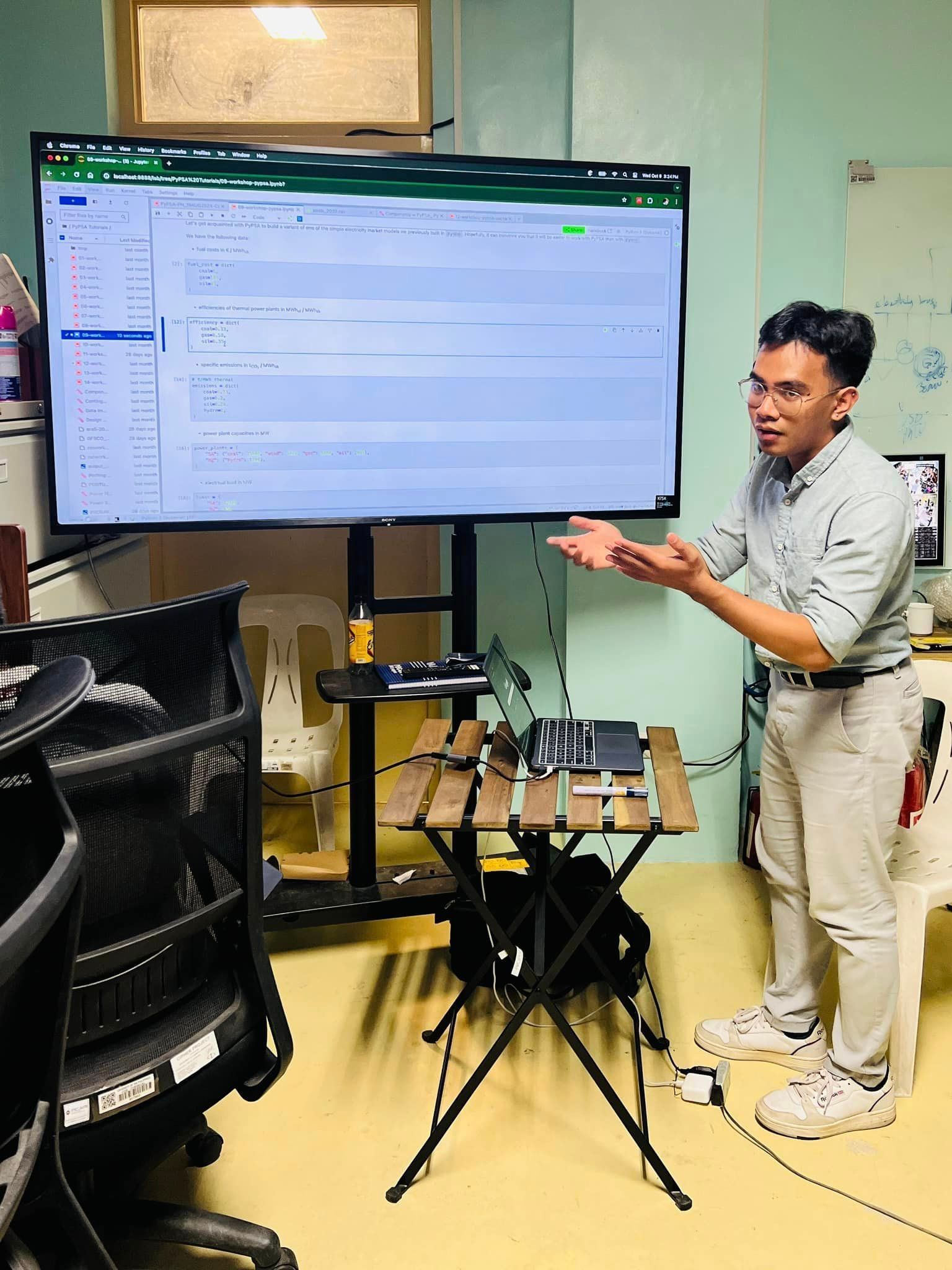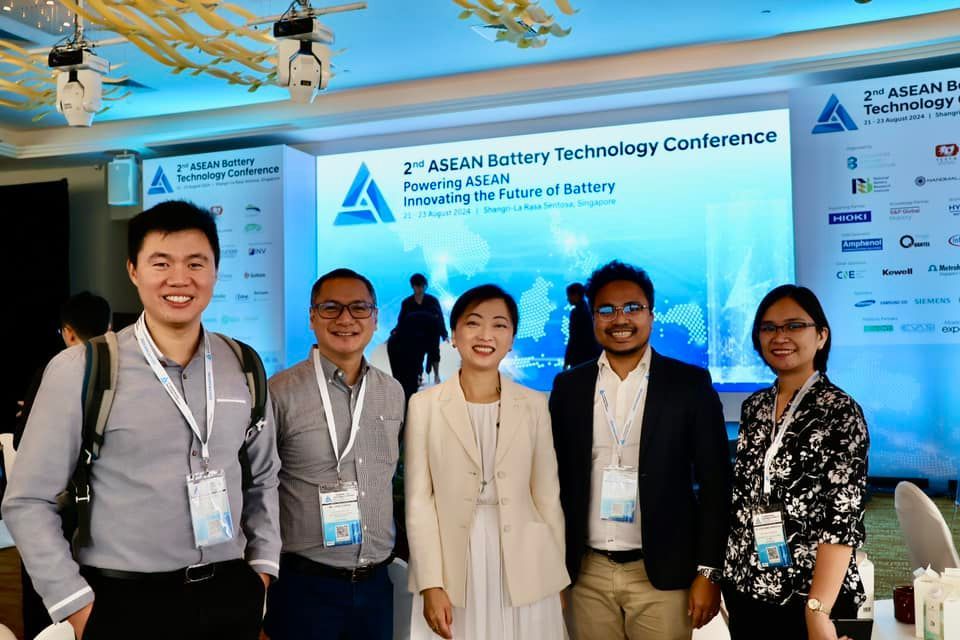Deconstructing SALt’s saltwater lamp – How it works and where the real challenges lie
Author’s note: The purpose of this article is not to discredit SALt’s product but to explain scientifically the technology behind it and its challenges, which were missing in the media coverage. I admire their effort to bring technologies to the masses and I believe that it is neither their intention to deceive nor they have unscientific claims. But, it is the responsibility of everyone (media, start-up founders, scientists, etc.) to provide accurate information to the general public, thus avoiding misleading statements and overly enthusiastic expectations from the people.
Sustainable Alternative Light or SALt’s “saltwater” lamp received widespread attention in the recent Asia Pacific Economic Conference (APEC), with the start-up’s co-founder Engr. Aisa Mijeno sharing the stage with US Pres. Barack Obama and Alibaba founder Jack Ma. Most of the news coverage, however, focuses on the “salt and the water” as being the heart that powers the lamp, which is outright erroneous.
“ Metal-air ” battery as the power source
To start, the LED lamp is powered by a battery, as Engr. Mijeno calls it a galvanic cell. Galvanic cell as a term includes all types of batteries in discharge, fuel cells, and corrosion cells, and it is too general to refer to the lamp’s energy source. The battery that powers the lamp is technically called a “metal-air battery” or a “metal-air” fuel cell. It is similar to fuel cells because it gets oxygen from the air but uses a metal as anode instead of hydrogen or other fuels. Metal-air batteries have been in commercial production for almost a century now. I have spent the past four years of my professional life reading and thinking about, and assembling metal-air batteries, in which I’m comfortable enough to discuss this subject. Let’s try to deconstruct the “saltwater” lamp, to objectively look at its merits and demerits, and to point out the real challenges so that more people could benefit from this technology.
The lamp is not powered by the dissociation of the salt in water because it does not produce the electrons needed for lighting. The flow of the electrons (i.e. electricity) results from the reactions within the battery, which is located inside the lamp’s case. Hence, it is irresponsible to call it a saltwater lamp because it fuels confusion and misleading claims. I hope SALt tries to correct the media in interviews when they are calling it a saltwater lamp. After all, if they know this and the media does not then they are morally responsible in avoiding such unscientific statements. Any type of battery, whether rechargeable or not, could power the lamp as long as it meets its voltage and current requirements and it’s not only limited to the metal-air battery that they are using.
Metal-air battery is an attractive type of battery because it has high energy density (more energy can be stored and generated in the battery) and has a straightforward design. This arises from the unique feature of metal–air batteries, when compared with other batteries such as nickel-metal hydride batteries and lithium batteries, such that one of the electroactive materials (i.e. oxygen) does not need to be stored within the battery. With abundant supply of oxygen in the air, metal–air batteries have extremely higher theoretical energy densities than their traditional aqueous and lithium-ion counterparts.
Saltwater is “ only ” an electrolyte
The battery is not your typical alkaline or lithium-ion batteries commonly found in the market. But, if you know someone who is using a hearing aide, then, you have certainly encountered this battery. When one pours the salt and water inside the lamp’s case, the LED lamp emits light. Why? There is no alchemy here, just elementary science. The dissolved salt in water (which now exists in ionic form) closes the circuit and allows the flow of electrons and ions within the battery compartment. It’s quite similar to turning on a switch when you want to turn on the lights. Shortly, saltwater acts as the electrolyte to facilitate the current flow within the battery. Any electrolyte with enough ions will do the job. In fact, the best electrolytes for metal-air batteries are the “basic” solutions, such as potassium hydroxide and sodium hydroxide. With them, you can get more juice from your battery, but they’re more difficult to handle and dispose.

Basic schematic of a metal-air battery, the type used in SALt’s lamp. (Original figure from J. D. Ocon)
The “ invisible ” metal electrodes
If the saltwater is not the one producing the electrons, then, which is it? The metal anodes, which are sometimes mentioned in SALt’s interviews and unfortunately sometimes not, are the powerhouse of the lamp. When the circuit is closed by putting the saltwater, electrons are generated by the oxidation of the metals. The metals to use should be highly oxidizable metals, such as lithium, magnesium, aluminum, and zinc. If the lamp is running on zinc anodes, then it is technically a “Zinc-air” battery, the type of battery used in hearing aids. Lithium, of course, is much more difficult to handle in humid conditions and especially in water, and this limits to most metal-air batteries being powered by the last three metals.
During operation of the lamp, the metal anode is continuously dissolved into the electrolyte until such time when the battery dies and the lamp needs a fresh supply of the metal anodes. As the elemental metal generates the electrons during oxidation, it’s transformed from a metallic form into an ionic form with a positive charge. One could easily recover the metal from the solution by running a current (electrical charging) but this requires much higher energy than generated during battery discharge and has its own perils. SALt’s looking at the strategy of providing metal anodes in sari-sari stores, which is a mechanical way of recharging the batteries. The challenge for SALt is how to manage the supply chain for the metal anodes because they would have to import the metals from abroad, ask someone to make it here in the Philippines, or to just refine it themselves, and then to distribute it to their lamp owners in the far-flung locations.
It should be mentioned that the metal electrode gets corroded when in contact with the saltwater, thus eating away the metal and generating hydrogen gas. If the corrosion rate is high, the lamp owner would have to dispose the saltwater electrolyte frequently or else see the metal continuously dissolving into the electrolyte even without using the lamp. It’s difficult to avoid this because pure metals are not really thermodynamically stable relative to their oxidized forms, and this is why it’s rare to find natural metal ores with high pure metal content.
The “ crucial ” air electrodes
While the metal electrode has its challenges, the real challenge lies in the catalyst to use as the air electrode. In the cathode, the electrons generated in the metal anode are taken in and are used to reduce oxygen from air. This reaction is equally important because the speeds of the two reactions must be at par with each other. Unfortunately, the reduction of oxygen occurs very slowly and this requires the help of a catalyst to speed it up.
To get the best power performance from the battery and in turn brighter light from the lamp, an excellent catalyst must be used. Platinum is the best catalyst for doing the job but it is extremely expensive. Most likely, SALt’s lamp is using a less expensive metal as catalyst in the cathode, such as manganese or cobalt. This would further add to the cost of the whole system and would have to be replaced in a few years due to degradation issues. Scaling up the production of the cathode, which would have to be pasted to a conducting backbone such as nickel foam to allow the oxygen in air to enter, is another serious challenge.
Air electrodes are the most researched component of the metal-air battery due to the big cost savings potential when you can replace expensive platinum as the catalyst. In fact, most patents awarded on this subject are on the synthesis and production of the air electrodes. As I have shared with Engr. Mijeno during our short conversation last March, their R&D would have look at this crucial component of their lamp.
How novel is the saltwater lamp?
Metal-air batteries with saltwater electrolyte have been around for quite sometime now. You can even buy toys, which run on this technology in any toy store. As I have understood it, the novelty in their device is in the use of a “joule thief” to increase the voltage of their battery. When using a zinc anode, the cell voltage is only around 1.6 volts, which could hardly power any application including LED lamps. You could avoid using this extra circuitry by combining the cells in series and parallel connections.
Can their technology be patented? Possibly, but in the current form it is highly unlikely. For an invention to be patentable, it must exhibit three things: novelty, an inventive step, and commercial value. The latter is easy to prove here, but the first two are difficult. Without patent protection, anyone can just copy their design and make their own device. If they decide to commercialize the technology as they are doing now, they might encroach into previously awarded patents on the use of this technology or its components and face lawsuits. Of course, they can seek for an “industrial design” protection for the case of the battery and lamp but that would only protect the design and not the technology. But for the sake of the people who might benefit from their product, let us hope that the patents for their lamp and battery belong to the public domain, where everyone can use them freely. As I see it, metal-air batteries for lighting will only make sense for emergency and back-up applications and not as the main energy source for everyday lighting. Given the challenges this technology is facing for lighting in remote areas, going solar or having a cranking device with a rechargeable battery that can power an LED lamp might be a more sustainable alternative and might be an easier problem to crack.
Key points so we can all be enlightened.
1. It does NOT RUN on SALTWATER.
2. This is NOT an INVENTION. It is not NEW. It must be a new technology for it to be called an invention, thus they can’t claim a patent on the lamp or battery.
3. It is NOT SUSTAINABLE, COST-EFFECTIVE, and ENVIRONMENT-FRIENDLY when you are dependent on metals for powering the lamp. Metals in this case will be like crude oil.
4. You CANNOT POWER A WHOLE ISLAND with this technology as SALt claims it to US Pres. Obama in the APEC summit. (See Inquirer APEC write-up here: http://business.inquirer.net/202783/filipina-entrepreneur-shines-at-apec)
5. SALt does not understand their chemistry well enough, neither is “saline solution or ocean water a catalyst to generate electricity” nor the “lamp lights up in saline solution because of chemical reaction that emits light”. The lamp works because of the electricity supplied by the battery when the circuit is closed by adding saltwater. (See Inquirer APEC write-up here: http://business.inquirer.net/202783/filipina-entrepreneur-shines-at-apec)
6. This technology is not simple as they claim it, it requires maintenance and replacement of parts (metal and oxygen electrode).
7. More importantly, other practical and cheaper technologies (solar or cranking device + battery + LED lamp) are more economical and environment-friendly for people in the rural areas for their everyday lighting.





